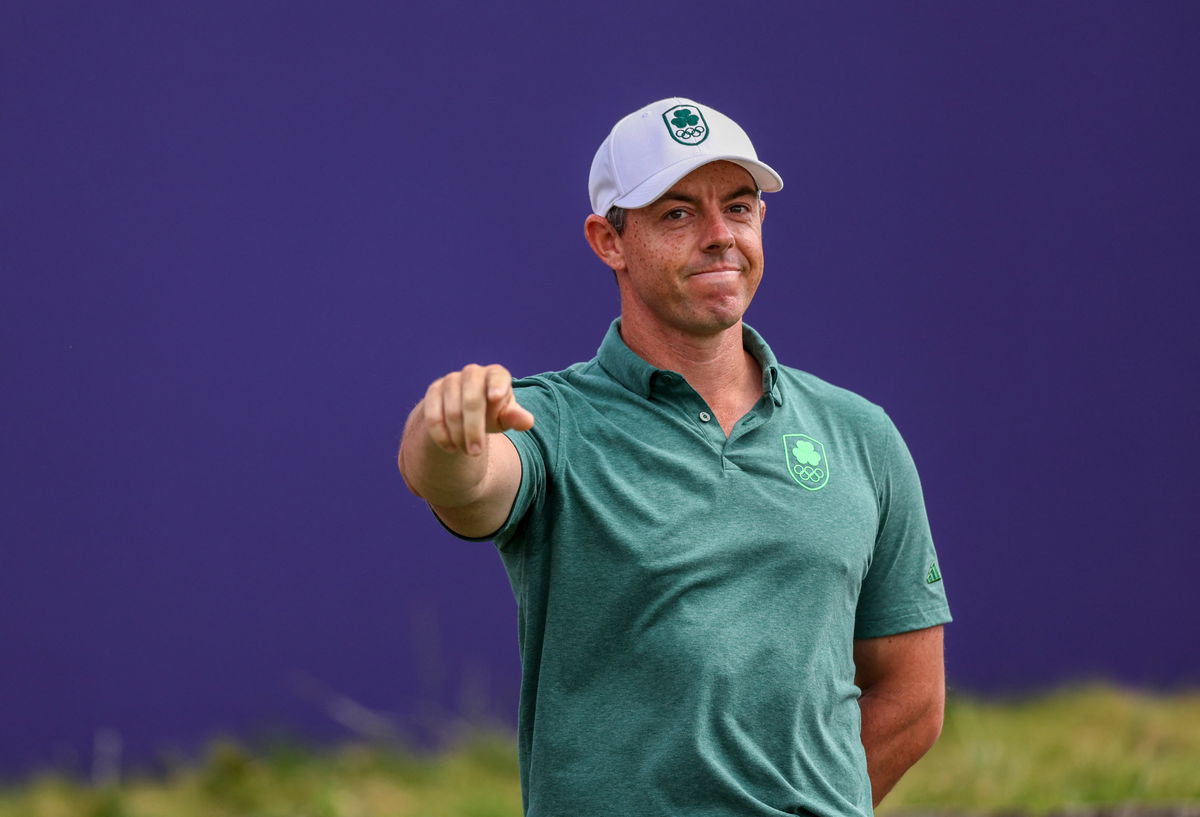

Rory McIlroy and Nike have been synonymous in golf for years now! However, recent occurrences at the Paris Olympics of all the paces, have had many wondering on whether he’s jumping ship to their biggest rival, Adidas. What sparked this? The Northern Irishman McIlroy who has been associated with Nike for over a decade, wore Adidas outfits during the Olympics.
Watch What’s Trending Now!
Does this now mean McIlroy is an Adidas Athlete rather than a Nike one? Well, no. The Northern Irish golfer has been with Nike since 2013, a contract that was signed at $20 million per year. This arrangement was renewed in 2017 for another ten years at a total of $200 million. The only reason he’s currently donning Adidas in Paris is because the Olympic rules state that athletes have to wear their nation’s official team wear. For the 4-time major winner, this means him wearing the German brand since it’s Adidas that sponsors the Northern Ireland team.
The sight of McIlroy in Adidas was indeed a shock to many. And rightly so, after all for 11 years now the golf world has been seeing him wear the swish from top to bottom. Golf journalist Michael McEwan who is well aware of the rule even tweeted, “Obviously knew it was coming but it’s still a little jarring to see Nike athlete Rory McIlroy rocking Adidas.” However, the Olympics is a symbol of one’s Nation over one’s self, and this rule too personified exactly that. It is “the power of the Olympics” as McEwan said.
ADVERTISEMENT
Obviously knew it was coming but it’s still a little jarring to see Nike athlete Rory McIlroy rocking Adidas. The power of the Olympics! pic.twitter.com/PTwV7FeAd4
— Michael McEwan (@MMcEwanGolf) July 30, 2024
Notably, McIlroy isn’t the only athlete at the international event who’s had a brand change. Another Nike athlete Scottie Scheffler had to wear J. Lindeberg clothing since it was the official attire of Team USA. Even Jason Day, who generally sports Malbon Golf Clothing was wearing Asics, Team Australia’s sponsor. Such instances illustrate that Olympic rules can sometimes trump long-term sponsorships for the sake of the nation.
ADVERTISEMENT
The Role of Rule 40 in Sponsorship Dynamics
The rule 40 of the Olympic Charter is very influential in these sponsorship dynamics. Rule 40 was created to safeguard the interests of the official Olympic sponsors and it bars athletes from endorsing advertisements for non-sponsors during the “blackout” period, which is from the time before the opening ceremony up to a few days after the closing ceremony. This rule helps to keep the branding of the Games consistent.
The fact that each National Olympic Committee (NOC) may have slight variations in the way it applies Rule 40 only complicates the matter. For instance, while conventional promotion is limited, athletes and sponsors can post materials connected to the athlete’s experience without promoting the products.
ADVERTISEMENT
The Olympic Games represent national pride over club or team identity, which was evident when McIlroy changed from Nike to Adidas for the Northern Ireland team. This adherence to national attire demonstrates the ability of the Olympics in promoting national representation. McIlroy’s case, together with other athletes such as Scottie Scheffler and Jason Day, shows how Rule 40 affects athlete sponsorships.
Top Stories
Cowboys Fire Defensive Coordinator Matt Eberflus: Contract, Salary, NFL Earnings & More

Ross Chastain Labels NASCAR Driver “The Most Punchable Face” to Excuse Himself Over Punchgate Controversy

10 Biggest NFL Draft Busts of the Last Decade, Including Trey Lance and Justin Fields

Andy Reid Sets Record Straight on Travis Kelce’s Chiefs Future As Retirement Question Continue to Mount

Commissioner Steve Phelps Quits NASCAR Days After Getting Exposed in Lawsuit Trial

Arman Tsarukyan Back in Play as Justin Gaethje Staph Infection Rumors Causes Fan Panic Before Paddy Pimblett Fight

It is important for athletes and brands to know these regulations to fully unlock partnership opportunities while respecting the rules and regulations of the International Olympic Committee. What are your thoughts on this rule? Do you think it balances the interests of sponsors and athletes effectively? Share your views in the comments below!
ADVERTISEMENT
ADVERTISEMENT
ADVERTISEMENT

